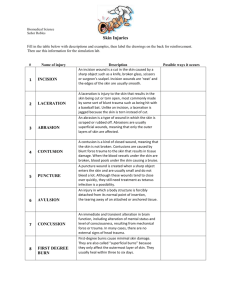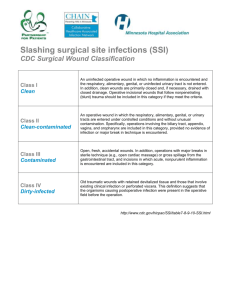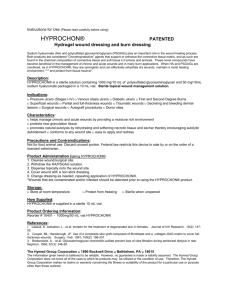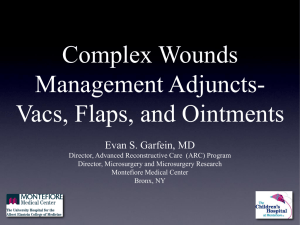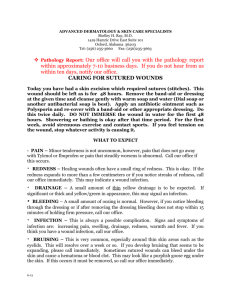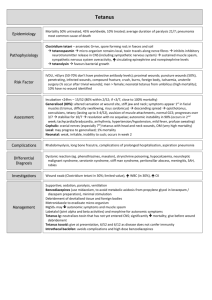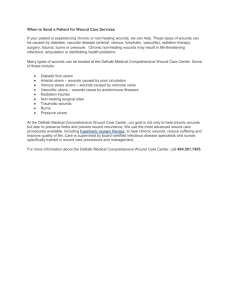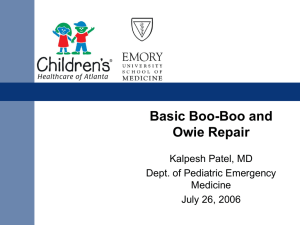Wound Care
advertisement
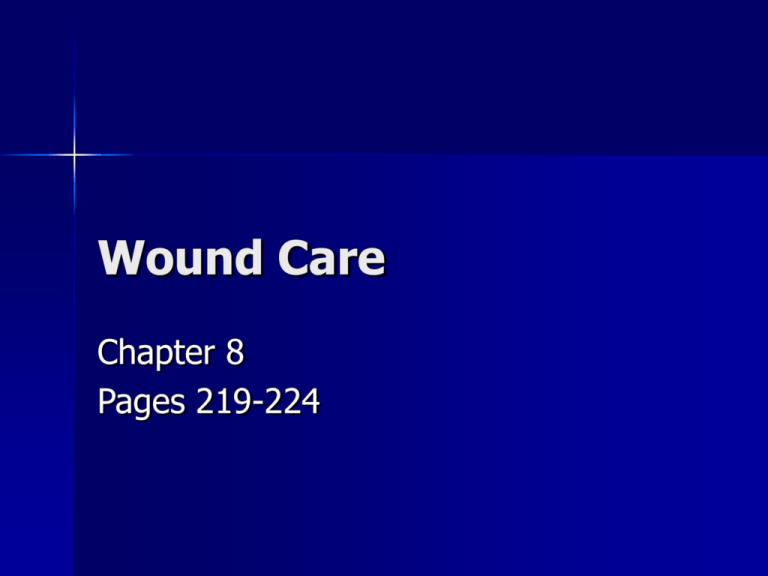
Wound Care Chapter 8 Pages 219-224 Caring for Skin Wounds Skin wounds are extremely common in sports Soft pliable nature of skin makes it susceptible to injury Numerous mechanical forces can result in trauma – Friction, scrapping, pressure, tearing, cutting and penetration Types of wounds Abrasions – Skin scraped against rough surface – Top layer of skin wears away exposing numerous capillaries – Often involves exposure to dirt and foreign materials = increased risk for infection Abrasions Types of wounds Laceration – Sharp or pointed object tears tissues – results in wound with jagged edges – May also result in tissue avulsion Laceration Laceration Laceration Types of wounds Incision – Wounds with smooth edges Incisions Types of wounds Puncture wounds – Can easily occur during activity and can be fatal – Penetration of tissue can result in introduction of tetanus bacillus to bloodstream – All severe lacerations and puncture wounds should be referred to a physician Puncture Wounds Types of wounds Avulsion wounds – Skin is torn from body = major bleeding – Place avulsed tissue in moist gauze (saline), plastic bag and immerse in cold water – Take to hospital for reattachment Avulsion Immediate Care Should be cared for immediately All wounds should be treated as though they have been contaminated with microorganisms To minimize infection, clean wound with copious amounts of soap, water, and sterile solution – Avoid hydrogen peroxide and bacterial solutions initially Immediate Care Dressing – Sterile dressing should be applied to keep wound clean – Occlusive dressings are extremely effective in minimizing scarring – Antibacterial ointments are effective in limiting bacterial growth and preventing wound from sticking to dressing – Utilization of hydrogen peroxide can occur several times daily before reapplication of ointment Immediate Care Sutures may be necessary – Deep lacerations, incisions, and occasionally punctures will require some form of manual closure – Decision should be made by a physician – Sutures should be used within 12 hours – Area of injury and limitations of blood supply for healing will determine materials used for closure – Physician may decide wound does not require sutures and utilize steri-strips or butterfly bandages Use of Sutures Signs of Wound Infection Same as those for inflammation – Pain – Heat – Redness – Swelling – Disordered function Pus may form due to accumulation of WBC’s Fever may develop as immune system fights bacterial infection Tetanus Bacterial infection that may cause fever and convulsions and possibly tonic skeletal muscle spasm for non-immunized athletes Tetanus bacillus enters wound as spore and acts on motor end plate of CNS Following childhood vaccination, boosters should be supplied once ever 10 years If not immunized, athlete should receive tetanus immune globulin (Heper-Tet) immediately following skin wound
